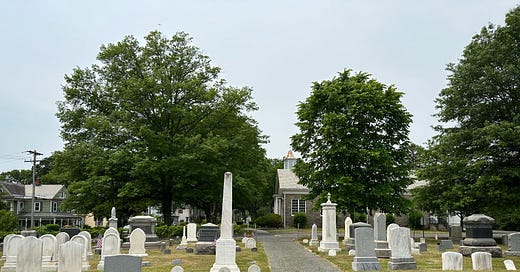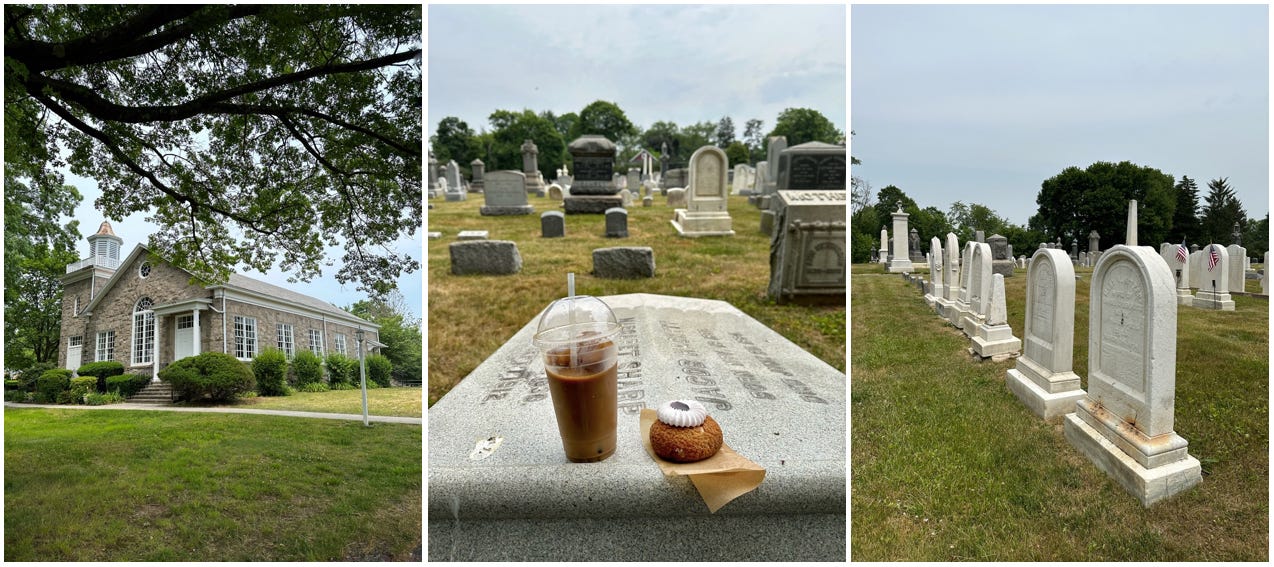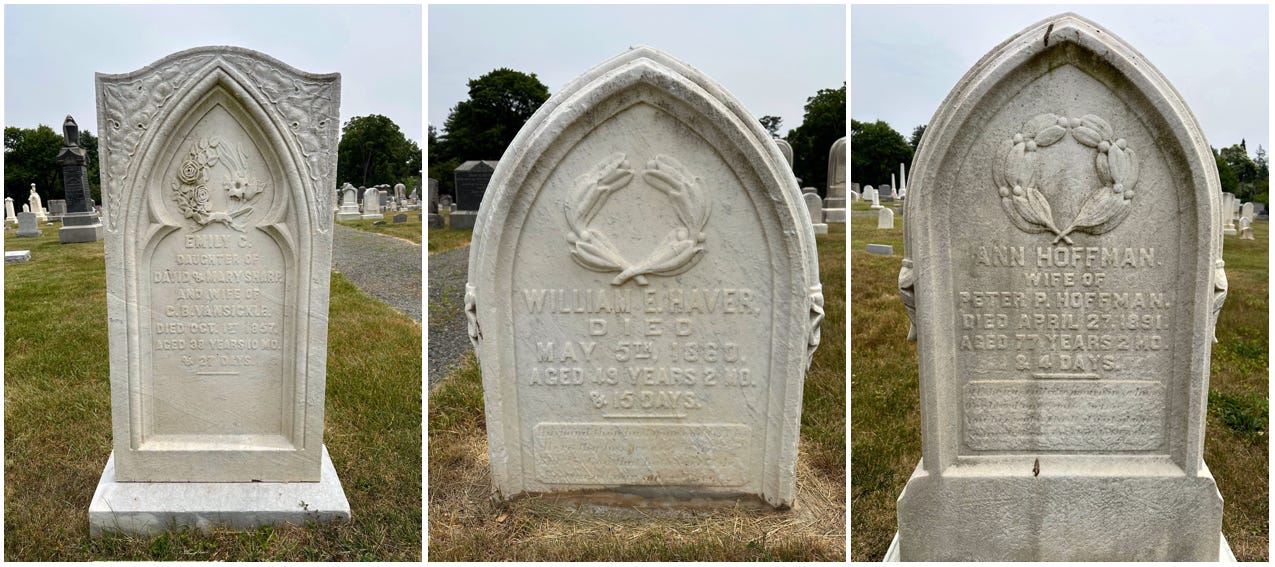Sunday Pastries With the Dead 29
The circa-1854 New Lebanon Reformed Church Cemetery in Lebanon, NJ.
Today’s location is a marvel of white marble markers, and the artistry among them is impeccable.
The cemetery—home to over 1300 graves—is nestled in the center of a gorgeous Victorian house-laden New Jersey town, and beside it is a lovely circa-1854 church. The congregation was established in 1747, and three buildings—a log cabin, frame structure, and brick church—preceded the current one.
I really loved my time here—it’s a proud, peaceful place, and I was able to cap my visit with a long walk through quiet streets and plenty of historical home gawking. At first blush, the churchyard seemed fairly straightforward—the markers are neatly arranged amid a flat, square parcel of land—but as I walked among the rows, the deeper stories behind the headstone carvings revealed themselves.
The stone that first stopped me in my tracks was that of little Willie—his marker is quite weathered and difficult to read (from what I can gather he was 2 years, 8 months, and 20 days old when he died in 1881), but the message on the back is unmistakeable: Drowned July 1881. It’s extremely rare to see a cause of death on a headstone, and—especially for one this young—it really humanizes the heartbreak of sudden loss. The symbol at the top of the marker is likely a very worn-down lamb, meaning one who died young.
The other heartstopper was this stone honoring a husband and wife, which contains more combined symbols than I’ve ever seen on a single monument. Sarah Jane “Jennie” Wyckoff Melick’s side boasts a pair of doves (innocence, peace) at the top and a winged hourglass (symbolizing our time on earth being limited/the Holy Spirit taking us away before our time) at the bottom, which is apropos considering that she died at age 28. One side next to hers bears no name, but has an angel in flight at the top (standing for the deceased’s ascent to heaven) and a broken column at the bottom (symbolizing a life cut short).
Sarah’s husband Gilbert C. Melick is on the next side—at the top is a compass and a square (the traditional symbol of the Freemasons) but I’m a bit perplexed as to what the round symbol in the center is (there should be a G there for the Freemasons, but instead there seems to be a very weathered M). I’m also not sure what the two extra crossed stick-like objects are. Any ideas, y’all? At the bottom is a trio of wheat bundles, symbolizing someone who lived into old age before their soul’s “harvest”—Gilbert was 83 when he died, so that tracks.
The next side is beautifully rendered with a woman who represents two of the seven virtues, Hope and Faith. The former is recognizable because there’s an anchor beside her (symbolizing the soul’s voyage to heaven). The latter holds a cross to underscore the faith of the deceased, with a lamp in one hand lighting the way to heaven. The monument is capped with a large hand cupping an upright basket of flowers, which also stands for hope.
There were many gorgeous examples of wreaths (eternal memory and immortality), including one made of roses (innocence, purity) and two made of olive branches (peace, humility). I adore the shapes of these headstones—they’re like Victorian picture frames!
To finish, some lovely fabric and paper renderings—this draped urn (earthly trappings being shed as the deceased ascends), a fringed cloth (the veil between life and death), and a scroll for “Our Little Frank” (symbolizing the deceased’s life being recorded in heaven).
Until next Sunday, fellow taphophiles!










